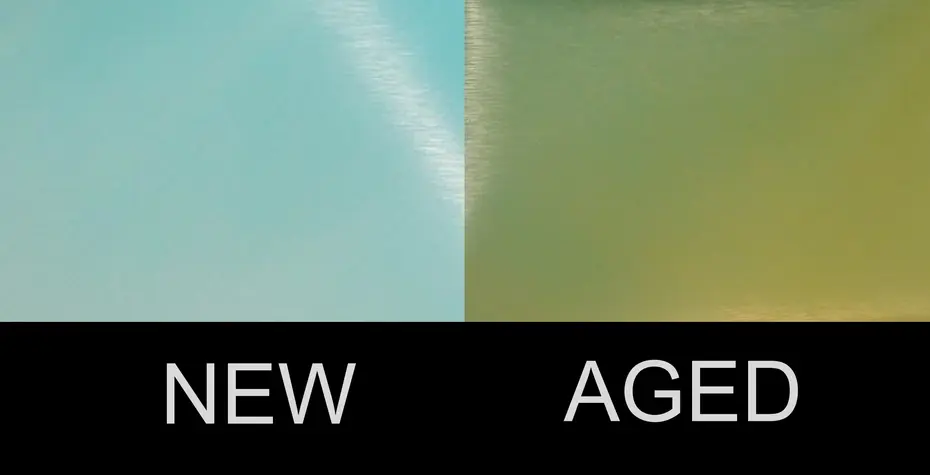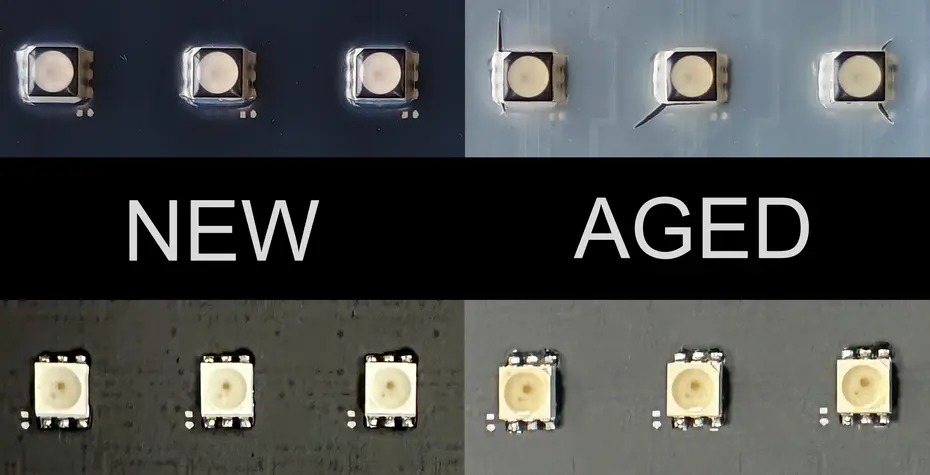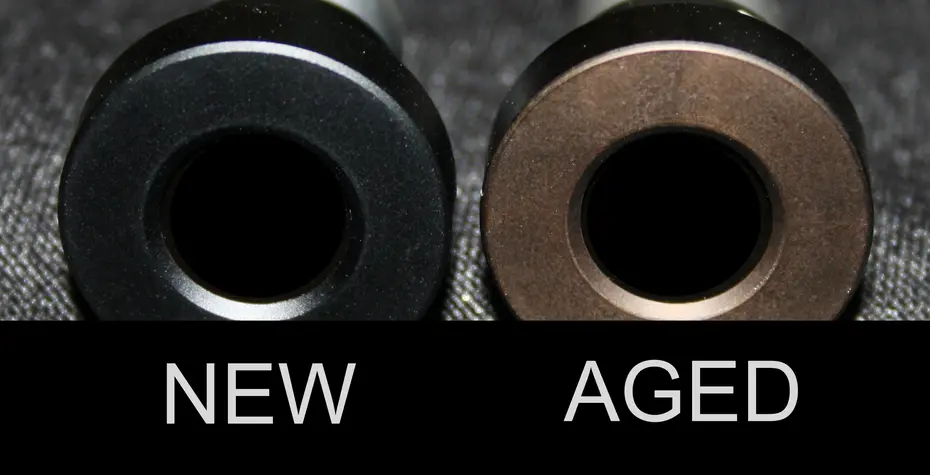UV aging, color fastness and photostability
In the context of ageing processes, color fastness and photostability, one often encounters the terms irradiation and weathering. So-called short-term weathering describes an accelerated testing method used to simulate the resistance of materials to weather-related influences. The basic requirements that must be met in order to quantifiably test the resistance of a surface to environmental influences can be derived from the conceptual distinction.
Short-term weathering simulates the main influencing variables from the natural environment. These include in particular temperature, humidity, atmospheric oxygen, intermittent wetting and optical radiation. Solar radiation - known as global radiation in meteorology - is the dominant factor. In combination with oxygen, humidity and temperature changes, it leads to photochemical reactions such as photooxidation, which are analyzed as part of the ageing test.
The term weathering is generally understood to mean the exposure of samples to a simulated or real outdoor climate - either under natural conditions outdoors or under controlled conditions in weathering devices.
Weathering simulates outdoor environmental conditions, including humidity and temperature changes as well as wetting. In contrast, irradiation generally represents indoor exposure.
During irradiation, the specimens are specifically exposed to optical radiation - under controlled conditions and without additional exposure to moisture. For example, the test specimens in Opsytec's irradiation chambers remain dry throughout. Depending on the requirements, the samples are exposed to an increased temperature and a higher irradiance during ageing or the photostability test.
Ageing due to UV radiation
Ultraviolet radiation leads to a variety of changes in polymer-based and other light-sensitive materials as a result of photochemical reactions. Typical damage mechanisms include solarization, photodiscoloration, photodegradation and material ageing caused by ozone formation:
a) Solarization
Solarization is the formation of microscopic cracks within otherwise transparent substrates. This microscopic structural damage leads to a clouding of the material, a reduction in mechanical properties, reduced transmission and possibly the formation of glare caused by scattered light.
b) Photodiscoloration
Photodiscoloration describes the spectral change in translucent plastics such as thermoplastic polyurethane (TPU), silicones or polycarbonates. Exposure to UV radiation results in a gradual yellowing or a whitish-chalky surface change (so-called "chalking"), caused by molecular restructuring or degradation of additives.
c) Photodegradation
Photodegradation is characterized by the breakdown of molecular bonds in the polymer network. These processes result in a significant reduction in tensile strength and lead to a change in mechanical and thermal properties, which severely impairs the integrity of the material.
d) Ozone-induced oxidation
Ozone, which can be produced from atmospheric oxygen by photolytic reactions under the influence of UV radiation, is a strong oxidizing agent. It accelerates oxidative ageing processes and causes embrittlement and cracking, particularly in elastomers, seals and polymer-based closures.
UV radiation induces photochemical reactions in the polymer structure of plastics. The resulting material degradation depends on the intensity and spectral composition of the radiation. Textiles are subject to similar damage mechanisms as conventional plastics.
These effects under UV irradiation are considered below:
Polymers are predominantly composed of organic, covalently bonded structural units. A dominant damage mechanism is photolytic chain scission. Here, high-energy photons cause the polymer main chain to break through direct absorption. In addition, the formation of free radicals occurs due to excited states within the polymer composite. The degradation processes described are mainly limited to the layers near the surface and typically do not extend deeper than 0.5 mm into the material interior. Nevertheless, stress concentrations caused by increased brittleness can initiate structural failure mechanisms, especially in technical molded parts.
UV-C radiation has the highest energy compared to longer wavelengths and therefore represents the greatest potential for damage to polymer materials. Due to absorption by the earth's atmosphere, natural UV-C radiation does not occur on the ground. Industrial use is also limited to specific applications. As a result, there is only limited empirical data on the ageing behavior of materials under isolated UV-C exposure. If UV-C radiation is used in technical devices, these can be tested accordingly.
Types of UV radiation
UV radiation is differentiated based on its spectral composition and the respective physical influences on materials. Natural sunlight - known as global radiation - primarily contains UV-A and UV-B radiation. While UV-A (315-400 nm) and UV-B (280-315 nm) occur in the free atmosphere, UV-B is almost completely absorbed by normal window glass. This means that only a reduced proportion of UV-A radiation is effective indoors.
A test with increased UV-A and UV-B irradiance simulates accelerated photochemical ageing under controlled laboratory conditions. However, this accelerated ageing cannot be described by a universal conversion factor, as it is highly dependent on the type of material, the duration of irradiation, the wavelength, temperature and humidity.
The maximum global irradiance on the ground under optimum conditions (clear sky, summer sun, 45° sun elevation) is around 1000-1100 W/m². The UV component is around 5-6 % for UV-A and around 0.5-1 % for UV-B. This results in typical values for terrestrial UV irradiance of approx. 62 W/m² (UV-A) and approx. 5.6 W/m² (UV-B).
For comparison: The BS-02 UV irradiation device generates combined UV-A/UV-B irradiance in the range of approx. 50-80 W/m². The UV-B component is therefore up to nine times higher than under natural solar radiation. Assuming an annual global radiation time of around 1000 hours of sunshine, an equivalent annual UVA dose can be achieved with the BS-02 device after approx. 29 operating hours.
In the UV-B range, this intensive irradiation - depending on the polymer type and its stabilization - enables acceleration factors of ageing of up to 200. However, the actual effectiveness of such laboratory ageing simulations must always be evaluated depending on the material and application and requires comparative irradiation.
Examples of UV aging
The image illustrates the comparison between new and aged electronic components using the example of light-emitting diodes. New components are shown on the left, while the samples after artificial UV ageing for 350 hours are shown on the right. The picture illustrates the ageing process as an example. The aged light-emitting diodes show yellowing and fading. In addition, the faded protective coating is partially cracked and brittle.
The difference in the light source for artificial ageing is particularly interesting. A comparison was made between UVB-313 irradiation (bottom) and artificial weathering with filtered xenon lamps (top). The total dose of irradiation was around 70 MJ/m² for UVB-313 irradiation and around 190 MJ/m² for artificial weathering with filtered xenon lamps.
According to [Schulz, Kurzzeitbewitterung, 2007], weathering methods that work with fluorescent lamps show an increasing yellowing of the samples due to UV irradiation. In contrast, irradiation with xenon arc lamps leads to stronger fading of the samples.
Another difference between the two methods lies in the temperature of the samples. When using fluorescent lamps, the samples remain colder. This is due to the restriction to the UV spectrum, which means that the samples are only exposed to about 6% of the irradiance generated in a xenon lamp device.
The following figure shows two anodized aluminum surfaces in direct comparison: on the left a new component, on the right an aged variant of the same type.
After ageing with UVB and UVA, the aged component shows clear photodiscoloration (discoloration). This visual change is characteristic of UV-induced ageing processes in which the color stability of the anodized layer is impaired. The causes can be photochemical decomposition of organic color pigments as well as structural changes in the oxide layer due to long-term exposure to UV radiation.
The BS-02 UV irradiation chamber from Opsytec Dr. Gröbel GmbH is designed for a wide range of applications in UV aging, color fastness and photostability and is particularly suitable for simulating aging processes indoors. The high homogeneity of the irradiation allows uniform exposure of the samples. With its ability for time- or dose-controlled irradiation in the UVA, UVB and UVC spectral ranges, it is particularly suitable for ICH Q1B-compliant studies, in-house ageing and indoor ageing.
The BS-02+ offers the necessary equipment for photostability tests in accordance with ICH Q1B. With the combination of UVA fluorescent lamps and LED light sources in the visible range (400-700 nm), the requirements of option 2 of the directive can be met. The dose is controlled via the UV-MAT Touch, which ensures consistent irradiation regardless of lamp ageing or environmental influences.





